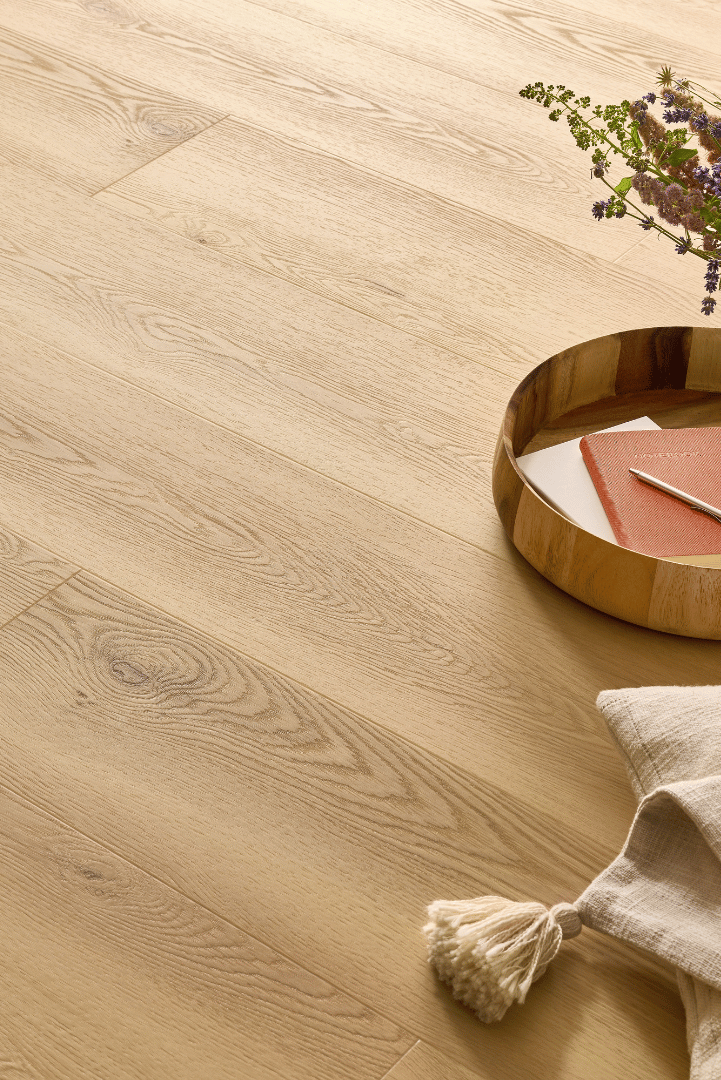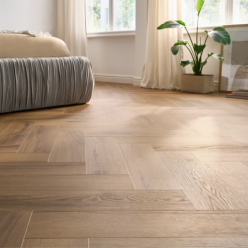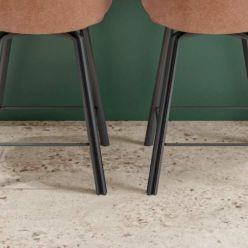Vinyl floor types
A Guide to SPC, LVT, and PVC Flooring
Vinyl flooring is now one of the most popular materials for residential and commercial spaces. Its combination of durability, aesthetics, and ease of maintenance makes it an excellent alternative to traditional floors like parquet and laminate. In this Fibas guide, we’ll explain the different types of vinyl flooring – SPC, LVT, and sheet PVC – and help you choose the ideal solution for your space.
Types of Vinyl Flooring We Offer
SPC Vinyl (Stone Plastic Composite)
SPC flooring is the most advanced form of vinyl flooring available today. It features a mineral core, providing exceptional stability, moisture resistance, and impact durability, making it ideal for kitchens, bathrooms, and high-traffic commercial areas. Its rigid structure ensures long life, and with the 5G click system, installation is quick, clean, and tool-free.
LVT Vinyl (Luxury Vinyl Tile)
LVT floors come in plank or tile formats based on PVC and mimic natural materials like wood and stone, but with greater resistance to moisture and wear. These floors provide excellent thermal and acoustic insulation, are comfortable underfoot, and visually appealing—perfect for homes and offices. With technologies like Embossed In Register (EIR), the surface texture aligns with the grain, creating a natural and authentic look.
Sheet PVC Flooring
Also known as “warm floors,” sheet PVC is ideal for covering larger areas. Due to its affordability and high durability, it’s used in both residential and commercial settings. At Fibas, we offer a wide selection of wood and stone patterns, focusing on water resistance and wear durability. Sheet PVC is practical, long-lasting, and easy to maintain.
Difference between PVC and Linoleum:
Although they may look similar, PVC flooring is made from synthetic materials (polyvinyl chloride), making it more resistant to moisture, chemicals, and long-term wear. Linoleum, on the other hand, is made from natural raw materials such as linseed oil, cork, and wood resin, making it more eco-friendly but less durable in humid or high-wear environments. That’s why PVC is often preferred in spaces where higher durability and easy maintenance are required.
Choosing Between Vinyl, Parquet, and Laminate
Vinyl vs. Parquet
Parquet offers the warmth and authenticity of real wood, but it is more expensive and requires careful maintenance. It's sensitive to moisture and not suitable for wet areas. Vinyl, on the other hand, is water- and scratch-resistant, easy to clean, and long-lasting—making it ideal for kitchens, bathrooms, and underfloor heating.
Vinyl vs. Laminate
Laminate can mimic wood well, but it’s not moisture-resistant and can be damaged by water. Vinyl offers better resistance to water and wear, is more flexible (making it easier to install over different subfloors), and is quieter and softer underfoot—perfect for daily living.
At Fibas, we offer curated vinyl collections that follow the latest trends and technologies:
Winflex – SPC floors with high durability (up to AC6), advanced 5G click installation, and integrated cork underlay for easy installation and longevity.
Aurora – SPC planks in a 6 mm thick, larger format, available in straight plank or herringbone layout. This collection includes wood, ceramic, and stone designs.
Arbiton – Includes Amaron Wood, Amaron Chevron, and Amaron Herringbone with HD Mineral Core technology and realistic wood and ceramic patterns.
Sheet PVC floors – Wide selection of wood and stone designs, available for fast delivery and easy installation.
Click vs. Glue-Down Vinyl – Which to Choose?
Vinyl flooring is available in two main formats: click system (e.g., 5G or 5G Cross) and full-surface glue-down installation. Each has its advantages and is suited for different needs.
Click System
Click vinyl is a popular choice for residential and light commercial spaces due to its fast and clean installation without adhesives. Systems like 5G allow for DIY installation, saving time and money. Suitable for areas with moderate traffic and fewer users.
Glue-Down Vinyl
For spaces with higher mechanical load, frequent use, or intensive traffic, such as commercial facilities, offices, or showrooms, glue-down vinyl is the superior choice. Proper subfloor preparation with leveling compound is crucial to ensure a perfectly smooth and clean surface. This avoids deformities and ensures strong adhesion.
Glue-down vinyl is thinner, but due to its direct bonding to the subfloor, it can withstand greater load, is more resistant to movement, moisture, and temperature changes, and is better for underfloor heating due to efficient heat transfer.
At the Fibas showroom, we’ve installed Winflex Pro glue-down vinyl – a testament to its reliability and performance in high-traffic environments. This is the perfect solution for anyone looking for a professional, elegant, and durable floor that can withstand intense daily use.
Tips for Maintaining Vinyl Floors
Vinyl floors are known for being easy to maintain, but with a few good practices, you can preserve their appearance and lifespan even longer:
Regular cleaning – Vacuum or sweep with a soft broom to remove dust and debris. A damp mop with a mild detergent is ideal for deeper cleaning.
Avoid harsh chemicals – Do not use abrasive products or strong cleaners that can damage the vinyl’s protective layer.
Scratch protection – Use felt pads or soft casters under furniture, especially in homes with pets.
Timely repairs – Small scratches and stains can be removed with special vinyl cleaners, while larger damage may require professional repair.
Moisture control – Even though vinyl is moisture-resistant, avoid standing water on the surface to prevent damage or dirt buildup over time.
Vinyl flooring from Fibas combines design, durability, and easy maintenance. Whether you choose robust SPC, elegant LVT, or practical sheet PVC, you'll find a quality floor tailored to your space. For personalized advice or more information, contact us or visit one of our showrooms.

























